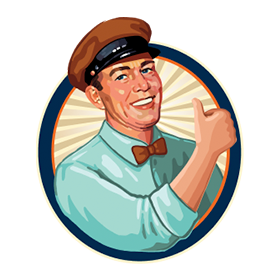Furnaces are a major part of the comfort of your home, and it’s no fun when they’re not working. Booking a regular furnace tune-up can help you avoid the cold. But if your furnace is blowing cold air, check out these tips to help you figure out the problem.
Thermostat not Working
Your thermostat can develop problems in several ways, so it’s a great place to start when troubleshooting.
The Fan is Set to On
If your fan is on all the time, your room won’t heat up any quicker. Instead, the fan will eventually start blowing out cool air once the area is considered warm enough. Too often we see clients setting their thermostats to “fan,” instead of “auto.” Setting your thermostat to auto-saves money on your energy bills and keeps your home warm.
Somebody Keeps Changing the Thermostat
When you have multiple people living in a home, it can be hard to get everyone on the same page when it comes to temperature. So, keep an eye on the thermostat to see if anyone changes the setting.
Low Battery
A low battery will prevent your thermostat from functioning properly. As the batteries wane, functions will start to drop, and temperature requests may be entirely ignored. The good thing is that this is an easy and affordable fix.
Air Filter is Clogged or Dirty
If your furnace is blowing cold air, you may have a dirty or clogged air filter. If the filter isn’t replaced, it can restrict the airflow through your heating system and cause the furnace to run longer than necessary.
You should replace your furnace filter at least twice per year. Schedule a furnace tune-up and if you don’t know how to change the filter just ask one of the HVAC techs at JW Plumbing, Heating and Air to switch it out for you.
High Limit Switch Failed
The high-limit switch is a safety device that cuts off the airflow to your furnace or air conditioner if the temperature rises above a predetermined point. In most cases, it’s located on the blower compartment near the motor.
When the high-limit switch stops working, it could be considered a safety concern. When this happens, it’s in your best interest to call an HVAC professional to perform a basic furnace tune-up and maintenance.
Clog in the Condensate Drain Line
The condensate drain line runs from the bottom of the outdoor unit to a drain pan and should be clear of leaves and other debris. Clogged drain lines can also cause damage to other parts of your HVAC system, as well as yourself and others in your home who may be exposed to toxic chemicals from improper drainage systems.
Issues with the Fuel Source
Before you rush to call a technician, check you have enough fuel to power your furnace. Is there oil in the tank? Is your gas supply still connected? If the furnace is powered by electricity, check for broken fuses.
Broken and Leaking Ducts
If you notice a drop in temperature from room to room in your house, it could mean that there’s a leak somewhere along the way. If you have more than one floor in your home, all the ductwork must be appropriately sealed because pressure differences between rooms can cause problems.
Pilot Light Isn’t On
A pilot light is a small gas flame that comes on when you turn the gas on your furnace. The pilot light allows oxygen to flow into a small chamber inside the furnace so that when you turn on the main burner, it can ignite and heat your house.
If the pilot light goes out, no heat will come out of your furnace because there is no supply of oxygen for the main burner to ignite. Call a professional for furnace maintenance if unsure how to relight the pilot light.
Burner Issues
When you turn on your thermostat, the burner ignites and heats up until it reaches the desired temperature in your home. A blocked burner is caused when lint or other debris gets caught in front of the flame area, so it can’t ignite properly. To fix this problem, remove whatever is blocking the flame area and allow it to ignite again without any obstructions in its path.
Flame Sensor Issues
- Dirty Flame Sensor – If your furnace is not heating, and you know there is no problem with your thermostat or wiring, check to see if there is any dirt or debris on the flame sensor. If so, clean it off with a damp cloth and test the furnace again to see if it works properly.
- Worn Out Flame Sensor – If cleaning does not work, then this may mean that your flame sensor needs to be replaced.
Always Call a Professional for Furnace Maintenance
Furnaces must be serviced regularly to ensure that they run efficiently and safely. A professional can spot potential problems before they happen, saving you money in repairs and replacement costs.
Want to stay warm and cozy this winter? Schedule a furnace tune-up with the JW Plumbing, Heating and Air and keep your furnace in tip-top condition.

